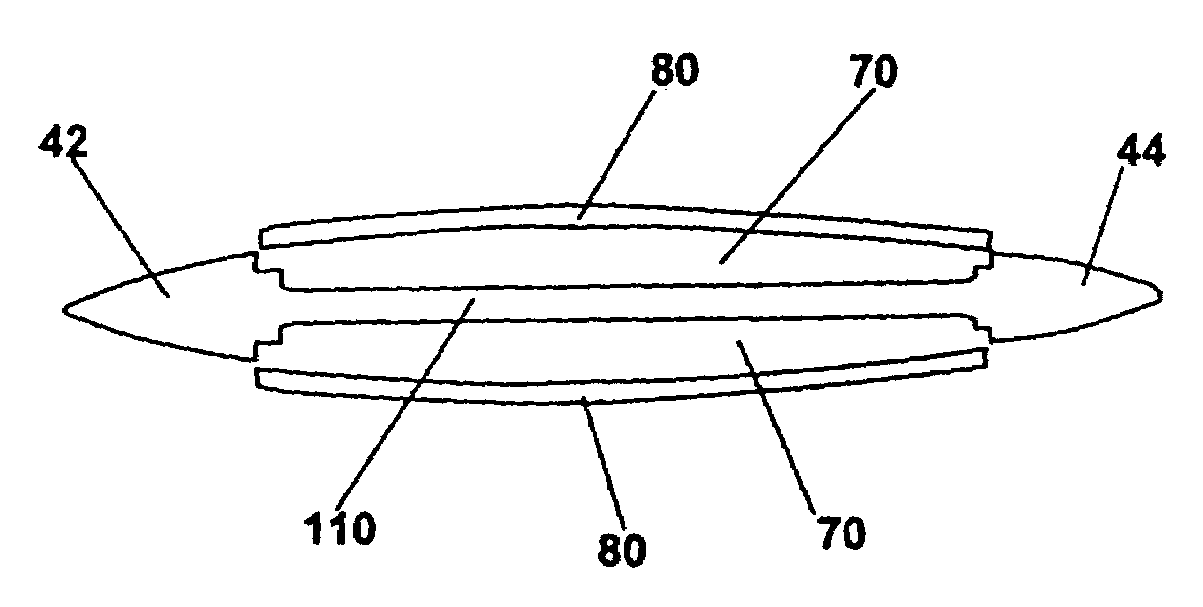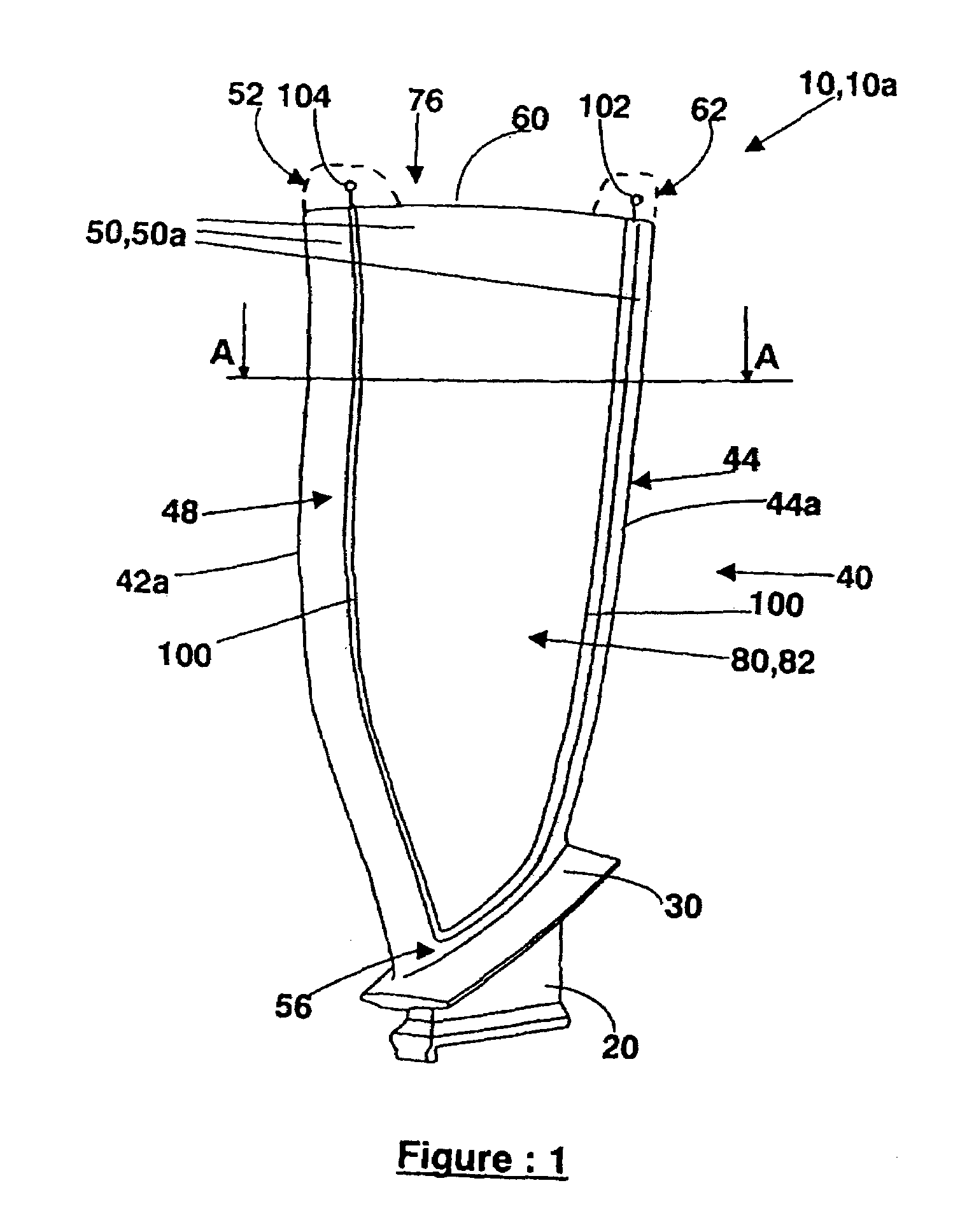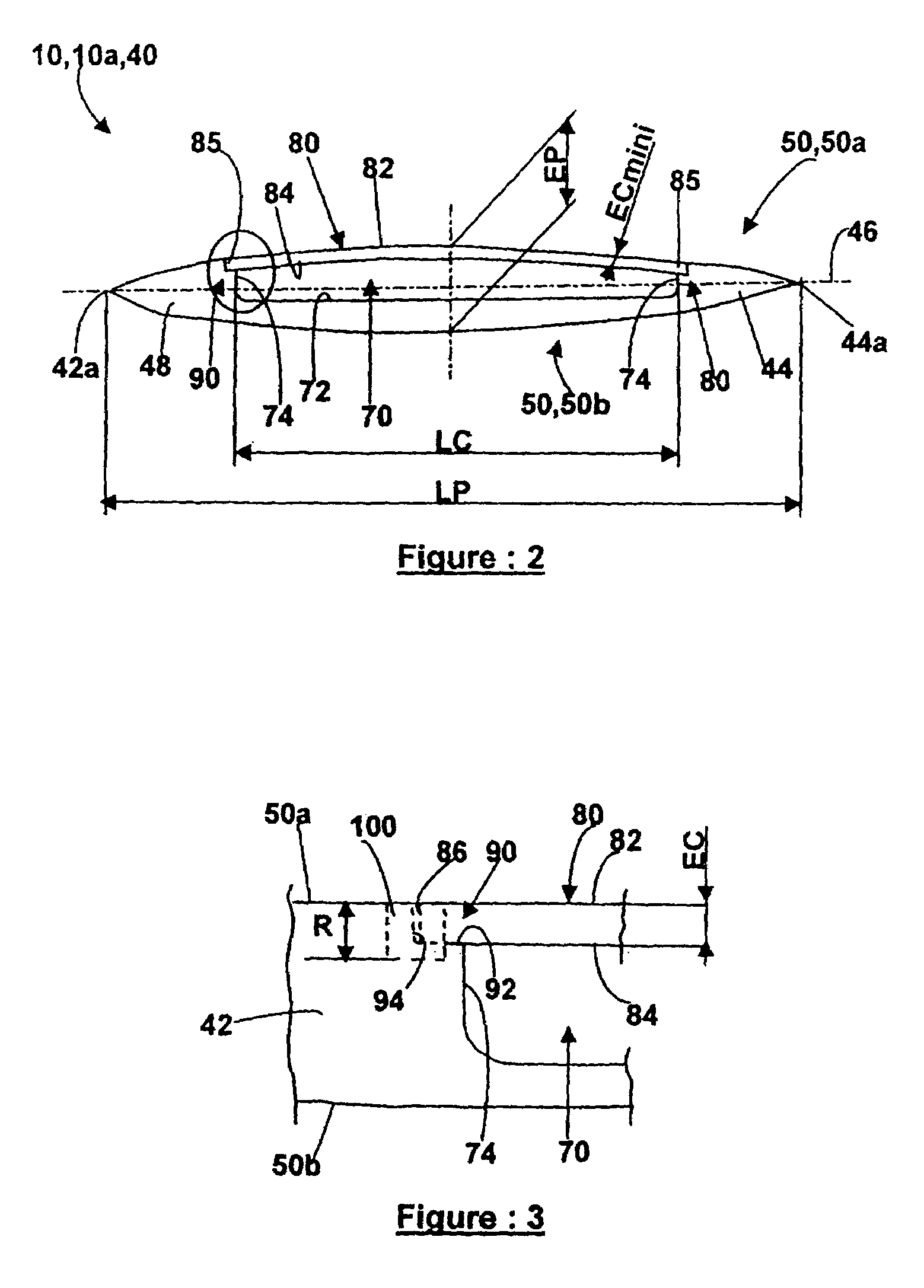Lightened turbomachine blade and its manufacturing process
a turbomachine blade and manufacturing process technology, applied in the field of turbomachine blades, can solve the problems of increased cavity volume, reduced mechanical strength and life of the blade, and increased cavity volume, so as to reduce the amount of welding to be done, increase the mechanical strength and the lifetime of the blade, and reduce the cost of the componen
- Summary
- Abstract
- Description
- Claims
- Application Information
AI Technical Summary
Benefits of technology
Problems solved by technology
Method used
Image
Examples
Embodiment Construction
[0038]Reference will firstly be made to FIG. 1. The blade 10 is a well-known object comprising, in succession from the bottom up in FIG. 1: a root 20 via which it is fitted into a rotor (not shown), a platform 30 and a airfoil 40. The airfoil 40 is thin and cambered. The airfoil 40 is bonded laterally at the front by a rounded edge called the leading edge 42, at the rear by a second, slimmer, edge called the trailing edge 44 and laterally by two sides 50. The base of the airfoil 40, that is to say that part of the airfoil 40 against the platform 30, will be denoted by 56 and the tip of the airfoil 40, that is to say that end of the airfoil 40 on the opposite side from the platform 30, will be denoted by 60. In addition, the line constituting the end of the leading edge 42 will be denoted by 42a and the line constituting the end of the trailing edge 44 will be denoted by 44a. The airfoil 40 is cambered, that is to say it forms, between the leading edge 42 and the trailing edge 44, an...
PUM
| Property | Measurement | Unit |
|---|---|---|
| thickness | aaaaa | aaaaa |
| shape | aaaaa | aaaaa |
| thickness EC | aaaaa | aaaaa |
Abstract
Description
Claims
Application Information
 Login to View More
Login to View More - R&D
- Intellectual Property
- Life Sciences
- Materials
- Tech Scout
- Unparalleled Data Quality
- Higher Quality Content
- 60% Fewer Hallucinations
Browse by: Latest US Patents, China's latest patents, Technical Efficacy Thesaurus, Application Domain, Technology Topic, Popular Technical Reports.
© 2025 PatSnap. All rights reserved.Legal|Privacy policy|Modern Slavery Act Transparency Statement|Sitemap|About US| Contact US: help@patsnap.com



